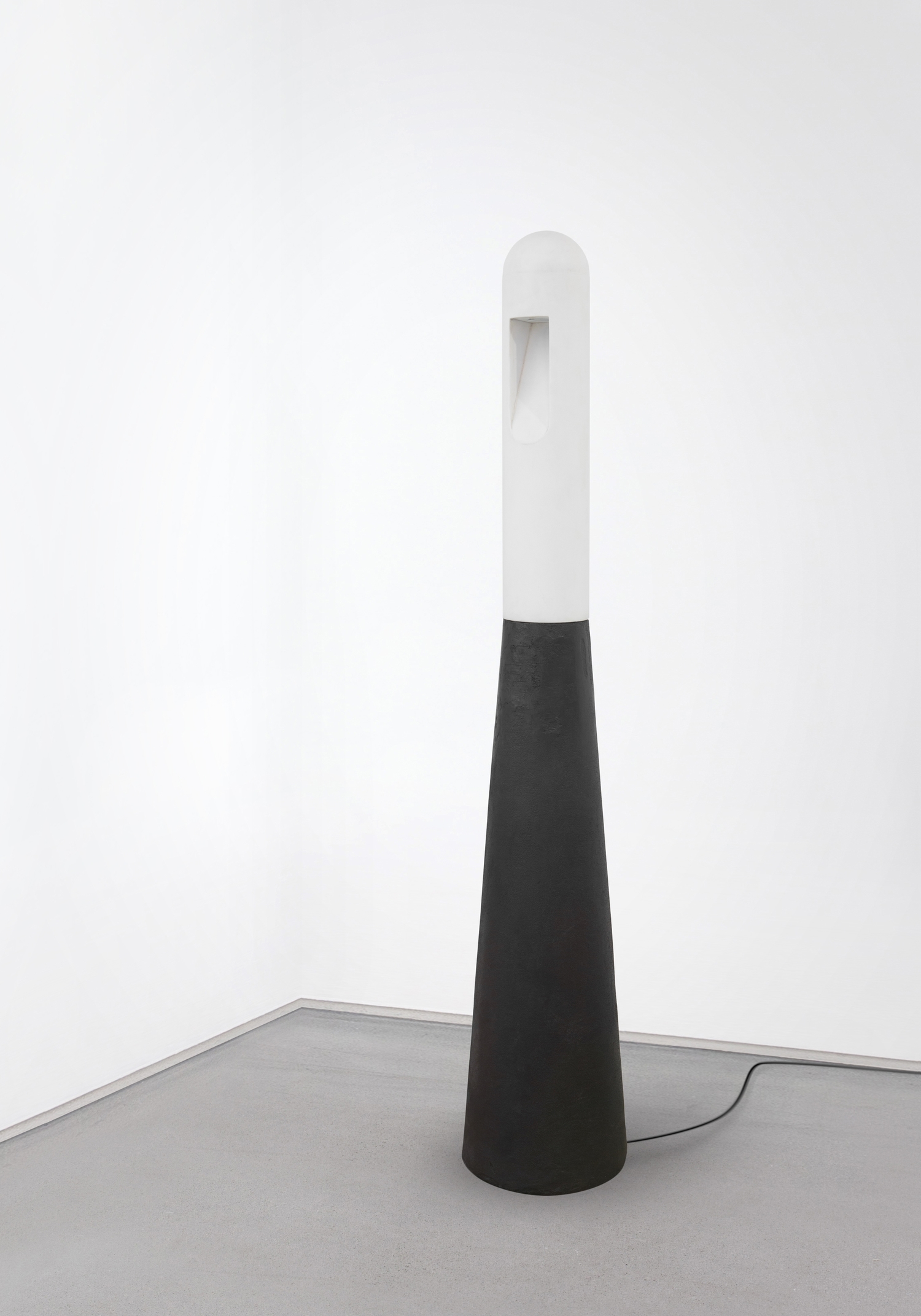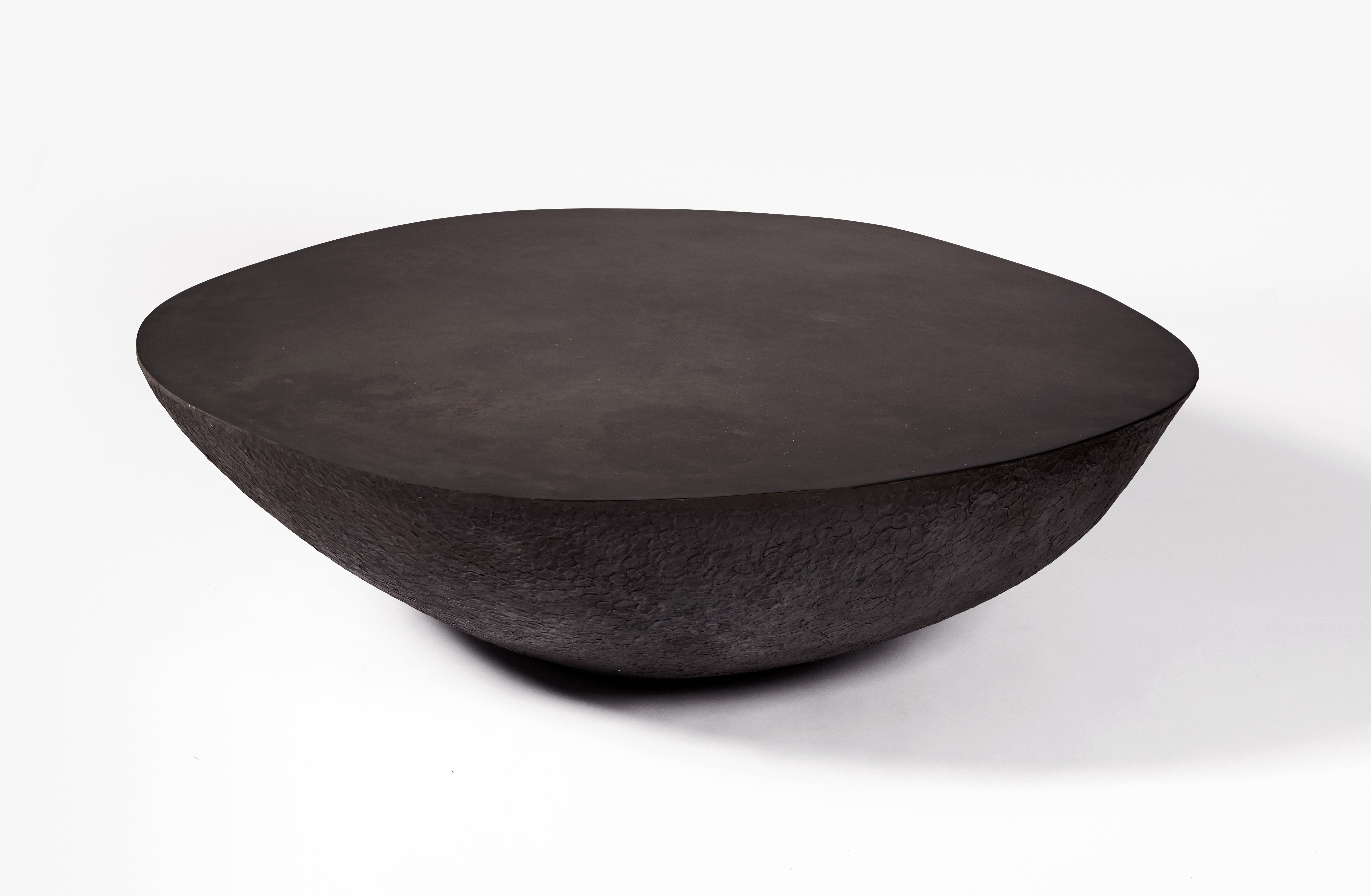At the Scale of Life
In 1966, the sculptor Tony Smith was asked about his sculpture Die, a six-by-six-foot cube of steel, considered one of the ultimate incarnations of Minimalism. Why had he not made it any bigger? “I was not making a monument.” And why had he not made it smaller? “I was not making an object.” It’s a famous exchange in art history circles, for in these few words, Smith seemed to stake out a new way of categorizing sculpture, according to scale: big monuments, small objects, and then something in between, existing at the scale of the body itself — the scale of life.
It’s the scale, too, of the works seen here, each of which has about the dimensions of a person, and to use another term closely associated with minimalism, the presence of one, too. Anthromorphism — or rather, gynomorphism - is particularly evident in Andile Dyalvane’s sculpture. It is from his Majola Sisters series (“Majola” being his own clan name) which pays implicit tribute to the grace and power of his extended family. The torqueing form with its flashes of surface pattern strongly evoke a fabric-clad body, twisting in free space.
It’s the scale, too, of the works seen here, each of which has about the dimensions of a person, and to use another term closely associated with minimalism, the presence of one, too. Anthromorphism — or rather, gynomorphism - is particularly evident in Andile Dyalvane’s sculpture. It is from his Majola Sisters series (“Majola” being his own clan name) which pays implicit tribute to the grace and power of his extended family. The torqueing form with its flashes of surface pattern strongly evoke a fabric-clad body, twisting in free space.
Rick Owens’ lamp is upright by comparison, a silent sentinel, though it establishes an equally assertive stance through its obdurate materials of marble and concrete, and the flaring silhouette of the base.
But perhaps unexpectedly, Guillaume Bardet’s Table Basse (“low table”), the most conventionally functional of the three objects here, is the one that comes closest to the affect of Smith’s sculpture. With its dead-flat top and eccentrically curved underside, it sits heavily in space — the same space as we do. It is neither monument nor object, just a remarkable physical fact in the world, something to reckon with.
DNA is a collaborative essay project, intertwining three gallery programs into a single, generative presentation.





